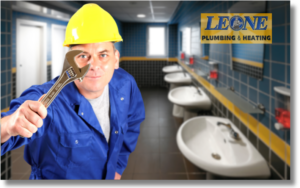
In the world of commercial plumbing, challenges can arise at every turn. From complex installations to intricate repair work, commercial plumbers must possess a unique set of skills to navigate the demands of their trade. In this article, we will explore how these skilled professionals tackle the myriad challenges that come their way and how they master the flow of business plumbing.
With a keen eye for detail and a wealth of problem-solving experience, commercial plumbers are adept at quickly diagnosing issues and implementing effective solutions. Whether it’s addressing a leak in a high-rise building or installing a state-of-the-art plumbing system in a commercial kitchen, they possess the knowledge and expertise to handle any task with precision and efficiency.
It’s not just technical prowess that sets commercial plumbers apart, but also their commitment to providing top-notch customer service. From establishing clear communication with clients to delivering projects on time and within budget, they go above and beyond to ensure client satisfaction.
Common Challenges Faced By Commercial Plumbers
Commercial plumbers often face a unique set of challenges that set them apart from their residential counterparts. One of the primary challenges is the sheer scale and complexity of commercial plumbing systems. Commercial buildings, such as high-rise offices, hospitals, and shopping malls, often have intricate networks of pipes, fixtures, and appliances that require specialized knowledge and expertise to maintain and repair.
Another challenge is the need to work around the schedules and operations of commercial businesses. Downtime can be costly for these establishments, so commercial plumbers must be able to diagnose and address issues quickly and efficiently, often working during off-hours or weekends to minimize disruptions. This requires excellent time management skills and the ability to work under pressure.
Additionally, commercial plumbing projects often involve complex installations, such as the integration of water-efficient fixtures, grease traps, and backflow prevention devices. These systems are designed to meet strict regulatory requirements, and commercial plumbers must stay up-to-date with the latest codes, standards, and best practices to ensure compliance. Failure to do so can result in costly fines and delays.
Solutions For Tackling Complex Plumbing Projects
Commercial plumbers often face complex plumbing projects that require a strategic and methodical approach. One of the key strategies they employ is thorough planning and preparation.
Before beginning a project, commercial plumbers carefully assess the scope of work, the existing plumbing system, and any potential challenges or obstacles. They work closely with clients to understand their specific needs and requirements, ensuring that the proposed solution aligns with their operational and budgetary constraints.
Another important strategy is the use of advanced problem-solving skills. Commercial plumbers are trained to think critically and creatively, drawing on their extensive knowledge and experience to devise innovative solutions to complex problems. Whether it’s designing a custom plumbing system for a specialized commercial kitchen or troubleshooting a persistent leak in a high-rise building, they are adept at finding effective and efficient solutions.
Effective communication and collaboration are also essential strategies for commercial plumbers. They work closely with other trade professionals, such as electricians and HVAC technicians, to ensure seamless integration and coordination of the various building systems. Additionally, they maintain open and transparent communication with clients, keeping them informed of project progress, potential challenges, and any necessary adjustments to the plan.
Tools And Equipment Used By Commercial Plumbers
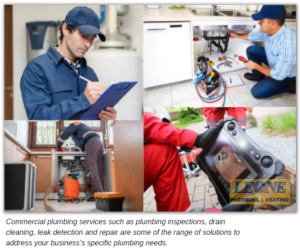
Commercial plumbers utilize a comprehensive array of tools and equipment to tackle the diverse range of plumbing challenges they encounter. From basic hand tools to advanced diagnostic equipment, these professionals have a vast repertoire at their disposal.
One essential tool in the commercial plumber’s toolkit is the camera inspection system, which allows them to visually inspect the interior of pipes and identify issues such as blockages, cracks, or corrosion. This technology enables them to diagnose problems quickly and accurately, without the need for extensive demolition or disruption.
Commercial plumbers also rely on specialized power tools, such as pipe threaders, pipe cutters, and power augers, to efficiently install, repair, and maintain commercial plumbing systems. These tools not only save time but also ensure a high level of precision and consistency in their work.
In addition to their tools, commercial plumbers often utilize advanced equipment, such as water pressure testing devices, flow meters, and leak detection systems, to identify and address complex plumbing issues. These advanced technologies allow them to pinpoint the source of problems and implement effective solutions, minimizing the impact on business operations.
Training And Certifications For Commercial Plumbers
Becoming a skilled commercial plumber requires extensive training and the attainment of specialized certifications. These professionals must possess a deep understanding of the complex systems and regulations that govern commercial plumbing, as well as the technical expertise to handle a wide range of plumbing challenges. Most commercial plumbers begin their careers by completing a formal apprenticeship program, which typically lasts between 4 to 5 years. During this time, they receive hands-on training in all aspects of commercial plumbing, including pipe fitting, fixture installation, and system design. They also learn to navigate the intricate codes and regulations that govern commercial plumbing, ensuring their work meets the highest standards of safety and compliance. In addition to the apprenticeship, commercial plumbers must also obtain various certifications to demonstrate their expertise. These may include state-specific plumbing licenses, backflow prevention certifications, and specialized certifications in areas such as medical gas installation or industrial plumbing. Maintaining these certifications requires ongoing education and training, as commercial plumbing standards and technologies are constantly evolving. Many commercial plumbing companies also encourage their employees to pursue additional training and professional development opportunities, such as workshops, seminars, and industry conferences. This helps ensure their plumbers stay at the forefront of the industry, equipped with the latest knowledge and skills to tackle the most complex commercial plumbing challenges.Outsourcing Commercial Plumbing Services
For many businesses, outsourcing commercial plumbing services can be a strategic and cost-effective solution. By partnering with a reputable commercial plumbing contractor, businesses can access a wealth of expertise and resources, while focusing on their core operations.
One of the primary benefits of outsourcing commercial plumbing services is the access to specialized expertise. Commercial plumbing contractors employ highly trained and experienced professionals who are well-versed in the unique challenges of commercial plumbing systems. These experts can provide tailored solutions that address the specific needs of the business, ensuring optimal performance and compliance with relevant regulations.
Another key benefit is the availability of advanced equipment and technology. Commercial plumbing contractors often invest in state-of-the-art diagnostic tools, specialized machinery, and cutting-edge plumbing solutions. By leveraging these resources, businesses can benefit from more efficient and effective plumbing services, often at a lower cost than maintaining these assets in-house.
 Outsourcing commercial plumbing services also allows businesses to focus on their core operations, rather than diverting valuable resources to manage and maintain their plumbing infrastructure. This can lead to improved productivity, enhanced customer satisfaction, and a more streamlined overall operation. Additionally, commercial plumbing contractors often provide 24/7 emergency services, ensuring that any plumbing-related issues can be addressed promptly, minimizing downtime and disruptions. So if you are a business and looking for commercial plumbing services in the Rochester New York area, contact us! We offer top-notch commercial plumbing services to address your commercial plumbing needs.
Outsourcing commercial plumbing services also allows businesses to focus on their core operations, rather than diverting valuable resources to manage and maintain their plumbing infrastructure. This can lead to improved productivity, enhanced customer satisfaction, and a more streamlined overall operation. Additionally, commercial plumbing contractors often provide 24/7 emergency services, ensuring that any plumbing-related issues can be addressed promptly, minimizing downtime and disruptions. So if you are a business and looking for commercial plumbing services in the Rochester New York area, contact us! We offer top-notch commercial plumbing services to address your commercial plumbing needs.
 Are you in need of a plumbing contractor but overwhelmed by the options available? Choosing the right professional for the job can make all the difference in the quality of work and customer satisfaction. But what qualities should you look for? In this article, we will explore the top qualities that make a plumbing contractor stand out from the crowd. Whether you’re dealing with a minor repair or a major plumbing project, these qualities can help you make an informed decision when hiring a contractor.
Are you in need of a plumbing contractor but overwhelmed by the options available? Choosing the right professional for the job can make all the difference in the quality of work and customer satisfaction. But what qualities should you look for? In this article, we will explore the top qualities that make a plumbing contractor stand out from the crowd. Whether you’re dealing with a minor repair or a major plumbing project, these qualities can help you make an informed decision when hiring a contractor.

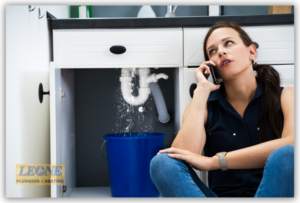 Dealing with a plumbing emergency can be a frantic and overwhelming experience. Burst pipes, overflowing toilets, or clogged drains can quickly turn your home into a chaotic mess. However, staying calm and taking immediate action is crucial to prevent further damage. Today, we will provide tips to help you confidently navigate plumbing emergencies. With a focus on staying calm and fixing the chaos, we will guide you through step-by-step solutions to common plumbing issues, ensuring that you have the knowledge to handle these situations effectively.
Dealing with a plumbing emergency can be a frantic and overwhelming experience. Burst pipes, overflowing toilets, or clogged drains can quickly turn your home into a chaotic mess. However, staying calm and taking immediate action is crucial to prevent further damage. Today, we will provide tips to help you confidently navigate plumbing emergencies. With a focus on staying calm and fixing the chaos, we will guide you through step-by-step solutions to common plumbing issues, ensuring that you have the knowledge to handle these situations effectively.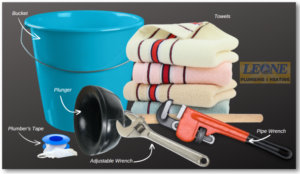 Now that you know the importance of staying calm during a plumbing emergency, let us explore the essential tools that you need. Having the right tools readily available can make all the difference in efficiently resolving a plumbing emergency. Here are some essential tools you should have in your toolkit:
Now that you know the importance of staying calm during a plumbing emergency, let us explore the essential tools that you need. Having the right tools readily available can make all the difference in efficiently resolving a plumbing emergency. Here are some essential tools you should have in your toolkit:
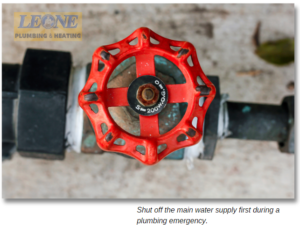
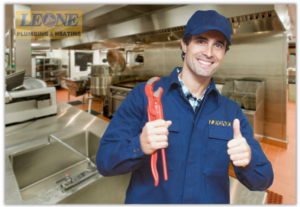
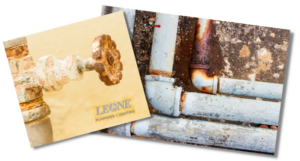 Are you aware that corroded pipes could be silently damaging your home? If left unchecked, corroded pipes can lead to costly repairs, cause water leaks, and even create potential health hazards. That’s why early detection and proper maintenance of your plumbing system are crucial. In this article, we will share expert tips on how you can save your home from the perils of corroded pipes.
Are you aware that corroded pipes could be silently damaging your home? If left unchecked, corroded pipes can lead to costly repairs, cause water leaks, and even create potential health hazards. That’s why early detection and proper maintenance of your plumbing system are crucial. In this article, we will share expert tips on how you can save your home from the perils of corroded pipes.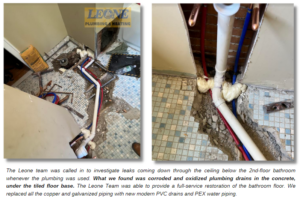 As Rochester, New York’s best plumbers, it is our goal to help you protect your home and your business from the perils of corroded pipes. We provide the right solution for your plumbing pipe maintenance and repair concerns. Don’t wait for problems to arise – start protecting your home today!
As Rochester, New York’s best plumbers, it is our goal to help you protect your home and your business from the perils of corroded pipes. We provide the right solution for your plumbing pipe maintenance and repair concerns. Don’t wait for problems to arise – start protecting your home today! 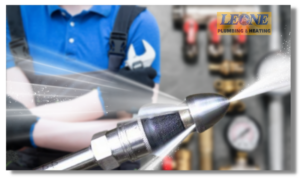 In the ever-evolving world of plumbing, advancements in technology continue to revolutionize the industry and provide more efficient and effective solutions for both plumbers and homeowners alike. One such breakthrough is the emergence of hydro jetter plumbing technology, a powerful tool that is changing the way plumbing professionals tackle tough clogs and blockages.
In the ever-evolving world of plumbing, advancements in technology continue to revolutionize the industry and provide more efficient and effective solutions for both plumbers and homeowners alike. One such breakthrough is the emergence of hydro jetter plumbing technology, a powerful tool that is changing the way plumbing professionals tackle tough clogs and blockages.